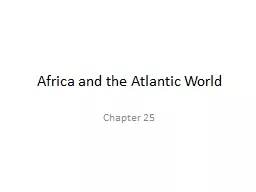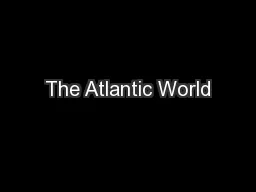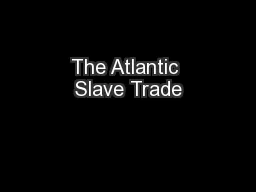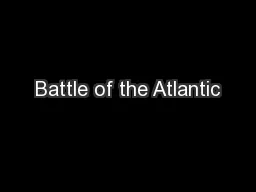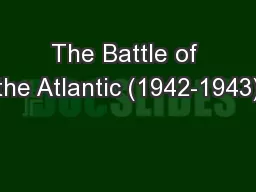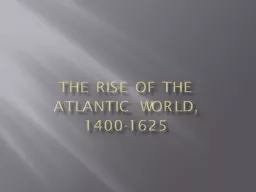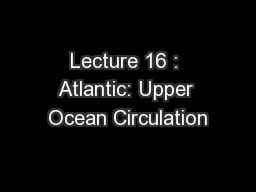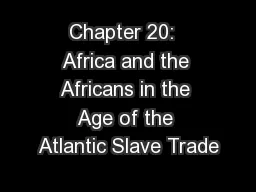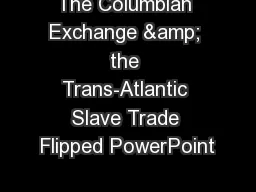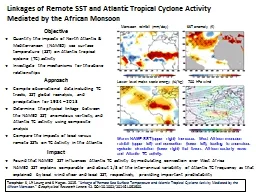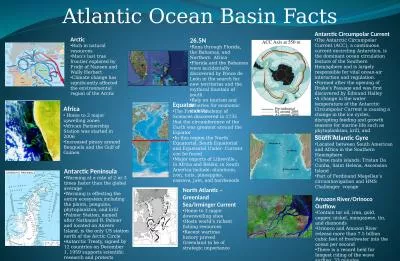PPT-Africa and the Atlantic World
Author : pasty-toler | Published Date : 2016-07-24
Chapter 25 Overview African Politics and Society Review Bantus migrations stateless societies gt chiefdoms and regional kingdoms gt TransSaharan trade gt large
Presentation Embed Code
Download Presentation
Download Presentation The PPT/PDF document "Africa and the Atlantic World" is the property of its rightful owner. Permission is granted to download and print the materials on this website for personal, non-commercial use only, and to display it on your personal computer provided you do not modify the materials and that you retain all copyright notices contained in the materials. By downloading content from our website, you accept the terms of this agreement.
Africa and the Atlantic World: Transcript
Download Rules Of Document
"Africa and the Atlantic World"The content belongs to its owner. You may download and print it for personal use, without modification, and keep all copyright notices. By downloading, you agree to these terms.
Related Documents

